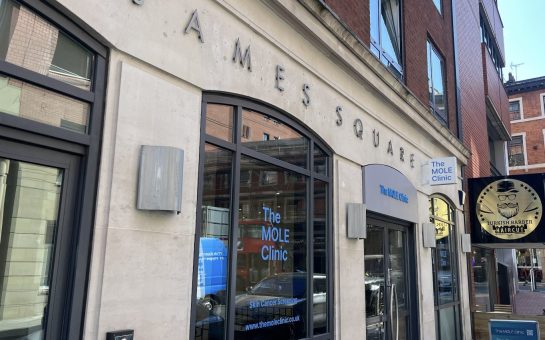For many, the start of the summer months marks the sparking of BBQ’s, venturing off to music festivals or even jetting off to sunnier climbs.
But for my wife it’s the beginning of the most agonising fortnight imaginable.
She suffers from trigeminal neuralgia, which is one of the most of the painful afflictions known to man.
In the majority of cases it’s caused by compression of the trigeminal nerve, the largest nerve inside the skull which transmits pain and touch sensations from your face, teeth and mouth to your brain.
Many sufferers compare it to getting stabbed in the cheek or getting an electric shock- with sharp, shooting pains effecting one side of the face, sometimes affecting both.
These sensations usually occur in sudden, short attacks lasting from a few seconds to about two minutes and experience these attacks of pain regularly for days, weeks or months at a time. In severe cases, attacks may occur hundreds of times a day.
It’s not clear exactly how many people are affected by trigeminal neuralgia, but the condition is thought to be rare, with estimates suggest that around 6,500 new cases are diagnosed each year in the UK.
It is rare to be diagnosed with this under the age of 40, with most cases first seen in people between the ages of 50 and 60, but it can occur in younger people. At 23, my wife is certainly an anomaly.
It started four years ago and, at first, it was quite difficult to understand the pain she was going through, only seven months into our relationship.
Working a stressful retail management job, she was one to get headaches quite frequently and it was quite easy to think (naively on my part) to be an overreaction.
But than she started getting up at three/four in the morning, awoken by the shooting pains. I’d stir, feeling her get up, to find she has gone downstairs.
I would find her, sitting in the corner of the kitchen or living room, rocking back and forth, trembling, shaking, head in hands.
Occasionally changing position to take her head out of her hands to punch herself in the side of the face. It was horrifying to see someone I loved in such distress, I just wanted her pain to go away.
She’d start screaming deliriously, threatening to kill herself before breaking down in tears. It wasn’t easier for her in the daytime either.
For hours on end she’d be almost completely mute, nodding and shaking her head as response to avoid the pain of talking. She was becoming a shell of her former self.
After a couple of unsuccessful doctor’s visits, we were ushered towards an emergency dentist, believing the problem was severe tooth or gum aches.
The dentist dismissed this on the spot. An ungodly amount of co-codamol here, further GP treatments there, but still no improvement. Two to three weeks of excruciating pain later it was like it never happened.
It was gone, and just like that it was forgotten. Until the same time came around the following year. And the year after that and the year after that. June became the month to dread.
Finally, after three years of misdiagnosis and a couple of dozen doctors’ visits, we finally found out the cause of my partners pain- after a brisk 4am stroll to the local A & E. But the diagnosis wasn’t the end, it was merely the beginning.
This seems to have been a similar story for most sufferers.
A spokesman for the Trigeminal Neuralgia Association said: “Many patients suffer for months or years without correct treatment and even undergo extensive, unnecessary dental work before the condition is correctly diagnosed.”
One sufferer, Clive, said: “In the first instance when the pain started, like most of us with this condition, I assumed I had a tooth problem and visited the dentist. I had three teeth pulled out before the dentist told me he thought I might have TN.”
Trigeminal neuralgia is extremely difficult to treat in the long term. There are a few short-term measures such as acupuncture, anti-convulsive medicines (usually for epilepsy sufferers) and minor surgical procedures but these could only last for a few years at most with the operations risking hearing loss, temporary facial numbness and very rarely, triggering a stroke.
The only silver lining with the pain was that it kept happening after her summer university exams each year and didn’t affect her results.
But now, into her first summer as a recruitment consultant in the life-sciences, a fast-paced and sometimes brutal environment, it doesn’t make this condition easy to live with, in the slightest.
The TNA spokesman added: “There can be periods of complete pain remission but these gradually become shorter and shorter, and patients therefore live in constant fear of a severe attack of debilitating pain. Unable to live normally, patients may become isolated and depressed, sometimes to the point of suicide.”
As a biochemistry graduate, she understands that pain is just a signal that the body sends to you to warn your body you’re in danger, but she’s not really in danger, it’s just turned against her.
We married just over six months ago, moved to Manchester from the South Coast and started our full-time careers in journalism and recruitment.
It’s nearly four years on from the beginning of my wife’s on-going ordeal and although it’s become easier to understand, nothing prepares you for the unbearable emotional and physical suffering it can really inflict.
If it has taught us both anything it’s that even though this disease is so debilitating, it’s surprising that so few know of it.
We can only hope that in time, with more awareness, emotional support and advances in modern medicine, there will be a more realistic solution to this horrendous condition.
For more information or to donate to the Trigeminal Neuralgia Association UK visit: http://www.tna.org.uk.
Picture courtesy of Sarah, with thanks.



